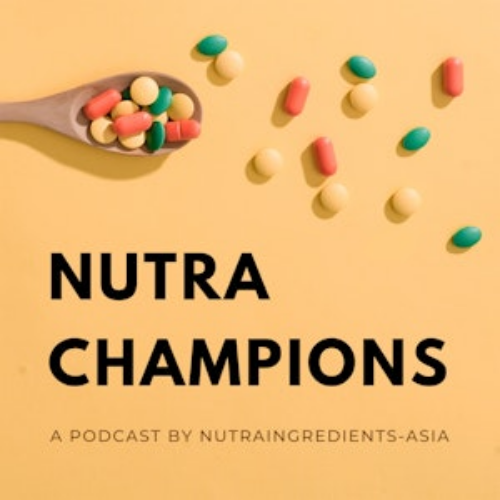Probiotics for Asian flush? Four strain formula shown to lower alcohol and acetaldehyde concentration – RCT

This is according to findings of a cross-over RCT which took place in South Korea between March and October 2019.
Writing in Nutrients, the researchers said that the probiotic mixture was able to downregulate alcohol and acetaldehyde concentrations. However, this was only seen in individuals deficient in aldehyde dehydrogenase 2 (ALDH2) – the key enzyme for alcohol metabolism.
Deficiency in ALDH2 is associated with the Asian flush syndrome, where there is a build-up of the toxic compound acetaldehyde which then causes blood vessels to dilate and the face to turn red.
Study method
Fifty-four males were randomised into either the intervention or placebo group.
Both groups consist of individuals with and without ALDH2 deficiency.
The intervention group took Duolac ProAP4, a formula containing four probiotics, namely Lactobacillus gasseri CBT LGA1, Lactobacillus casei CBT LC5, Bifidobacterium lactis CBT BL3, and Bifidobacterium breve CBT BR3 made by South Korean firm Cell Biotech – which also funded this research.
The four strains were chosen out of the 19 strains of lactobacillus and Bifidobacterium species as they were the best combination of strains for alcohol detoxification.
The Lactobacillus gasseri CBT LGA1 and Bifidobacterium lactis CBT BL3 strains demonstrated a high capacity for ethanol metabolism, while Lactobacillus casei CBT LC5 and Bifidobacterium breve CBT BR3 accelerated acetaldehyde metabolism, according to findings by Lim and et al.
Both the intervention and placebo groups took two hard capsules of the study material before and after dinner for 15 days.
Subsequently, there is a 28 days washout period, following which, a crossover study was conducted for another 15 days. This means that the group which took probiotics will now take placebo capsules and vice versa.
Alcohol test
On day 15 and 58 of the trial, all participants took an alcohol challenge test.
The aim is to find out if probiotic supplementation will affect alcohol and acetaldehyde concentration in the blood after alcohol intake.
The participants took a low-fat meal with Absolut Vodka containing 40 per cent alcohol by volume.
Blood levels of alcohol and acetaldehyde were then measured at 0, 30 minutes, one hour, two hours, four hours, and six hours after alcohol drinking.
Forty participants completed the 58-day study.
Findings
A decrease in alcohol concentration was seen in ALDH2-deficient participants who took the probiotic supplement.
It should be noted that the effect of the probiotics only took place one hour after the supplementation.
At the 30th minute, the blood alcohol level in the ALDH2-deficient participants who took the probiotics was 81.34 ± 31.55 mg/dL, higher than ALDH2-deficient participants from the placebo group at 77.28 ± 29.39 mg/dL.
Subsequently, from the first hour till the sixth hour, the blood alcohol level in the probiotic group dropped from 90.80 ± 24.72 mg/dL to 25.03 ± 13.44 mg/dL, while that of the placebo group decreased from 77.28 ± 29.39 mg/dL to 31.99 ± 14.94 mg/dL.
“These results indicate that Duolac ProAP4 does not affect the alcohol breakdown and its absorption in the stomach instantly, but it accelerates acetaldehyde oxidation into acetate in the intestine,” said the researchers.
On the other hand, a significantly lower acetaldehyde concentration was seen at the 30th minute, one-hour mark, and six-hour mark after alcohol consumption in the probiotic group as compared to the placebo group.
Comparing the two groups, acetaldehyde concentration in the probiotic group was 0.108 ± 0.063 mg/dL and 0.147 ± 0.092 mg/dL in the placebo group at the one-hour mark.
At the six-hour mark, it further dropped to 0.005 ± 0.006mg/dL in the probiotic group, while that of the placebo group was slightly higher at 0.010 ± 0.010 mg/dL.
Unexpected findings
An unexpected finding was that the reduction in both alcohol and acetaldehyde concentrations was only seen in the probiotic group with ALDH2-deficiency.
For those without ALDH2-deficiency, the probiotic supplementation did not lead to such reduction.
“These observations are unexpected, and it is difficult to explain these findings from the viewpoint of Duolac ProAP4’s ALDH enzyme activity,” the researchers said.
In addition, the reduction in blood acetaldehyde concentration did not relieve hangover symptoms, which is again, another surprising finding.
“These findings are contrary to our expectation that acetaldehyde is the main contributor to the development of hangover symptoms.
“Under physiological conditions, venous acetaldehyde produced in the liver can’t reach the brain due to the high ALDH2 enzyme activity of the endothelial cells that line the blood brain barrier.
“Therefore, Duolac ProAP4 may not affect acetaldehyde metabolism in the brain. However, as acetaldehyde is considered as a key player in many actions of ethanol in the brain, including behavioural changes, Duolac ProAP4 still represents a valuable therapeutic option in the management of the alcohol abuse disorders.”
A large-scale clinical study is recommended to test if Duolac ProAP4 could be used to treat individuals with hangover symptoms after alcohol drinking.
Source: Nutrients
Regulation of Alcohol and Acetaldehyde Metabolism by a Mixture of Lactobacillus and Bifidobacterium Species in Human
https://doi.org/10.3390/nu13061875
Authors: Jung, S.-J and et al



















